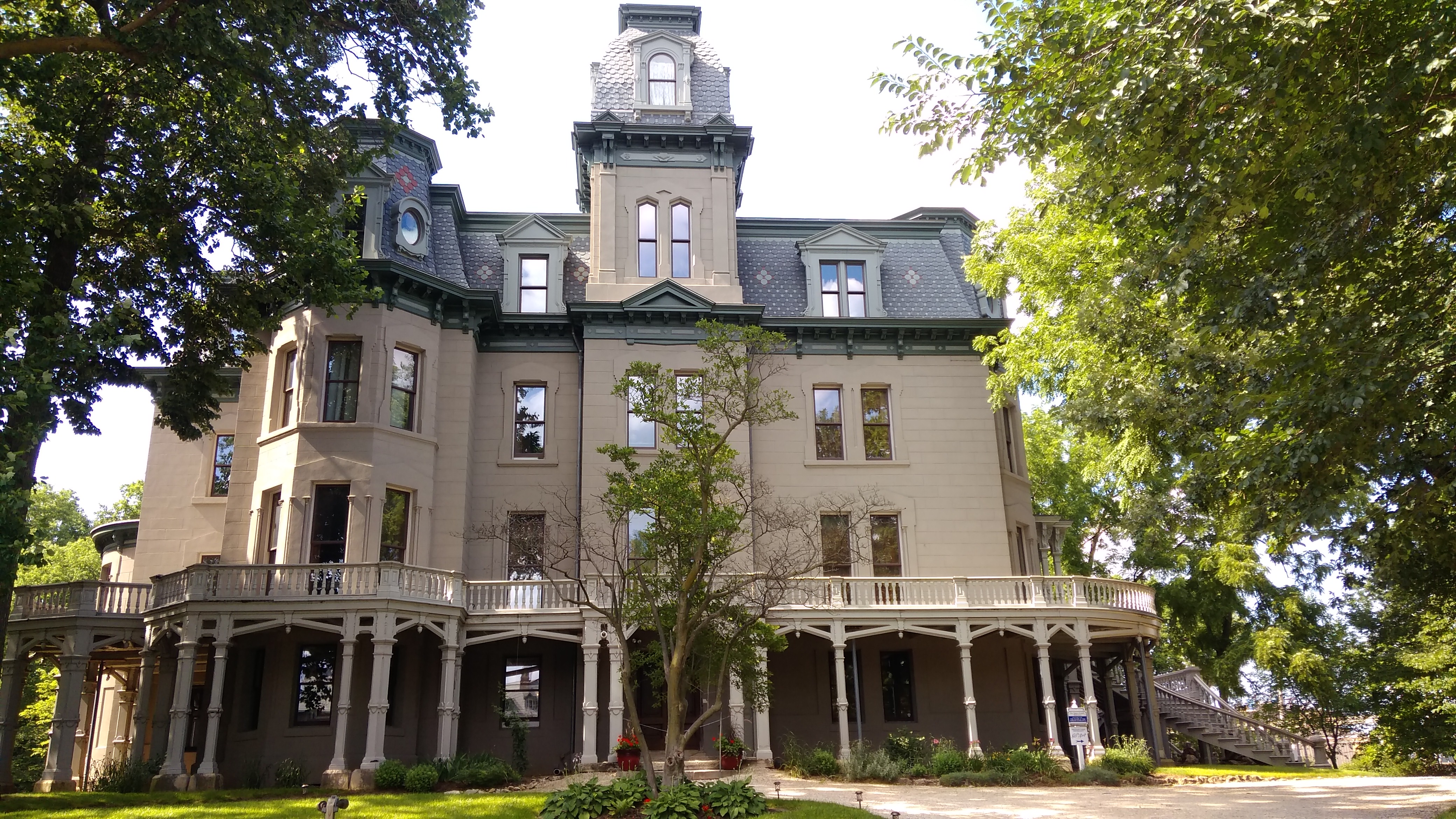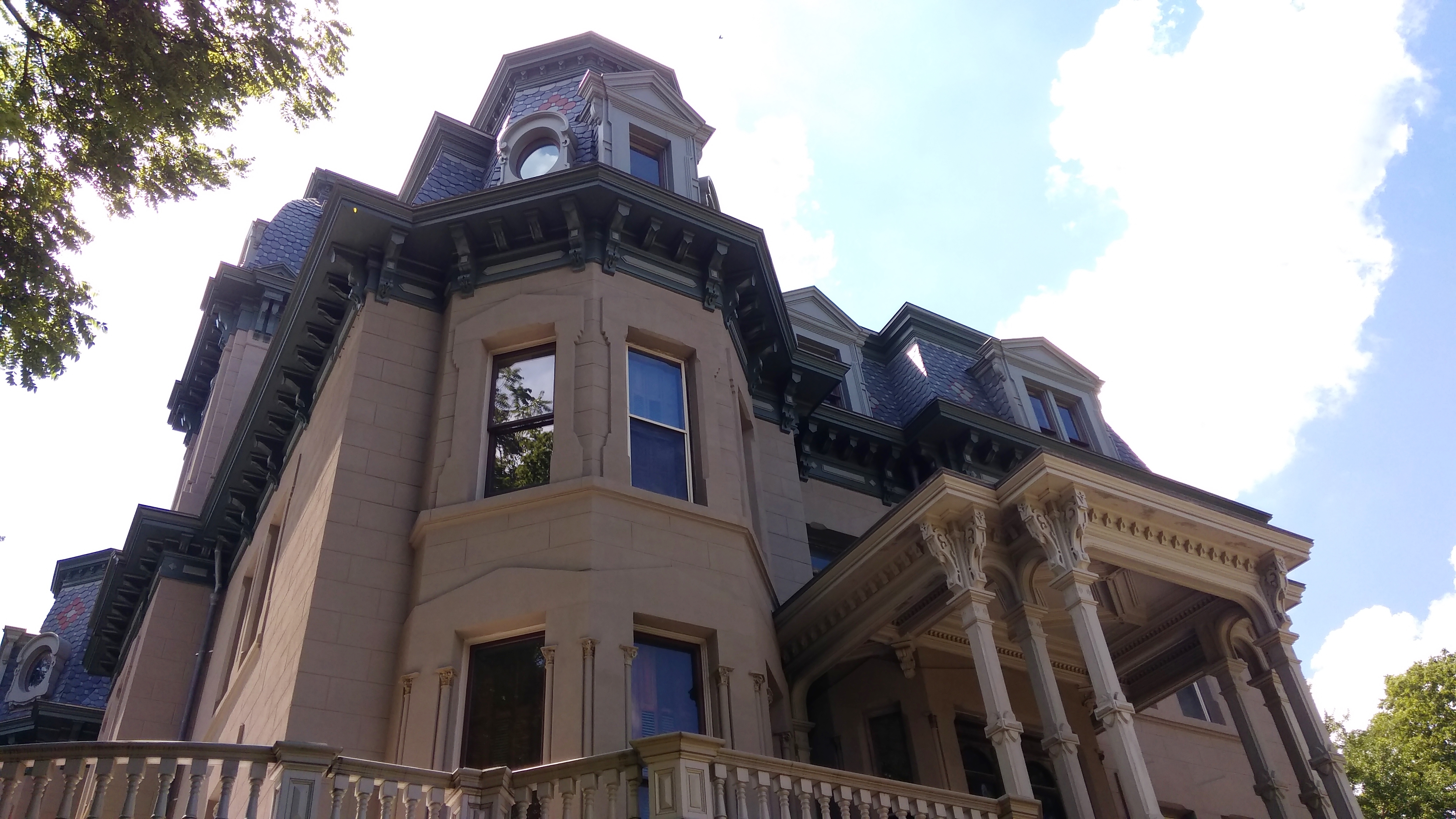Back to posting on July 8. A good Independence Day to all.
Before we went to Streator to see the Walldog murals, we visited LaSalle, Illinois. Like Streator, LaSalle is in LaSalle County, though it isn’t the county seat either — Ottawa is. Unlike Streator, LaSalle is on an Interstate. On two of them, in fact, at the junction of I-80 and I-39.
Those roads were still far in the future when a German, Edward C. Hegeler, came to LaSalle in the late 1850s. Before long he and his partner Frederick William Matthiessen, another German, were American zinc barons whose fortunes were made during the Civil War.
Why LaSalle? It was near coal deposits and the Illinois & Michigan Canal, besides a rail connection to Chicago. Smelting zinc required a lot of coal in those days. Zinc was to be had in southern Wisconsin. Cheaper to bring the zinc to Illinois than the coal to Wisconsin, I suppose.
As propertied men of the Gilded Age often did, Hegeler had a mansion built for himself and his large brood. In our time, it’s the Hegeler Carus Mansion, completed in 1876 in that Second Empire style we associate with eerie residences because of the drawings of Charles Addams.
 William W. Boyington designed the house. He’s better known for the Chicago Water Tower, but he also did the Joliet State Pen and the current Illinois State Capitol.
William W. Boyington designed the house. He’s better known for the Chicago Water Tower, but he also did the Joliet State Pen and the current Illinois State Capitol.
 The Carus in the name is after Hegeler’s son-in-law, Paul Carus, who wasn’t a zinc baron. He was a scholar, eventually running Open Court Publishing Co., which was founded by old man Hegeler, who clearly didn’t have a one-track zinc-oriented mind. Open Court published — publishes, it’s still around — titles in philosophy, science, and religion.
The Carus in the name is after Hegeler’s son-in-law, Paul Carus, who wasn’t a zinc baron. He was a scholar, eventually running Open Court Publishing Co., which was founded by old man Hegeler, who clearly didn’t have a one-track zinc-oriented mind. Open Court published — publishes, it’s still around — titles in philosophy, science, and religion.
We took the 3 p.m. tour of the Hegeler Carus Mansion on Saturday, partly as something to do during the hotest part of a hot day. The house doesn’t have central AC, but thick walls and wall units and fans made it tolerable inside.
A third-generation member of the Hegeler-Carus clan lived in the house until 2004, when he died aged more than 100. Now a foundation owns the place, and it’s doing the slow work of restoring the mansion. A few rooms are finished, complete with high Victorian furniture and wall and floor decor — there are some elaborately styled floors in this house — and many, many books.
“The elaborate interior decoration of the Hegeler Carus mansion is the work of August Fiedler, a talented German-American who excelled in interior design and furniture making,” says The Story of a House. “Although he designed many interiors in Chicago and elsewhere, most have been lost, leaving the Hegeler Carus as the largest and most intact surviving example of his work.”
Most of the rooms aren’t finished yet. Still, the flavor of the place is distinct. A historic property doesn’t have to be a House Beautiful specimen to be enjoyable.